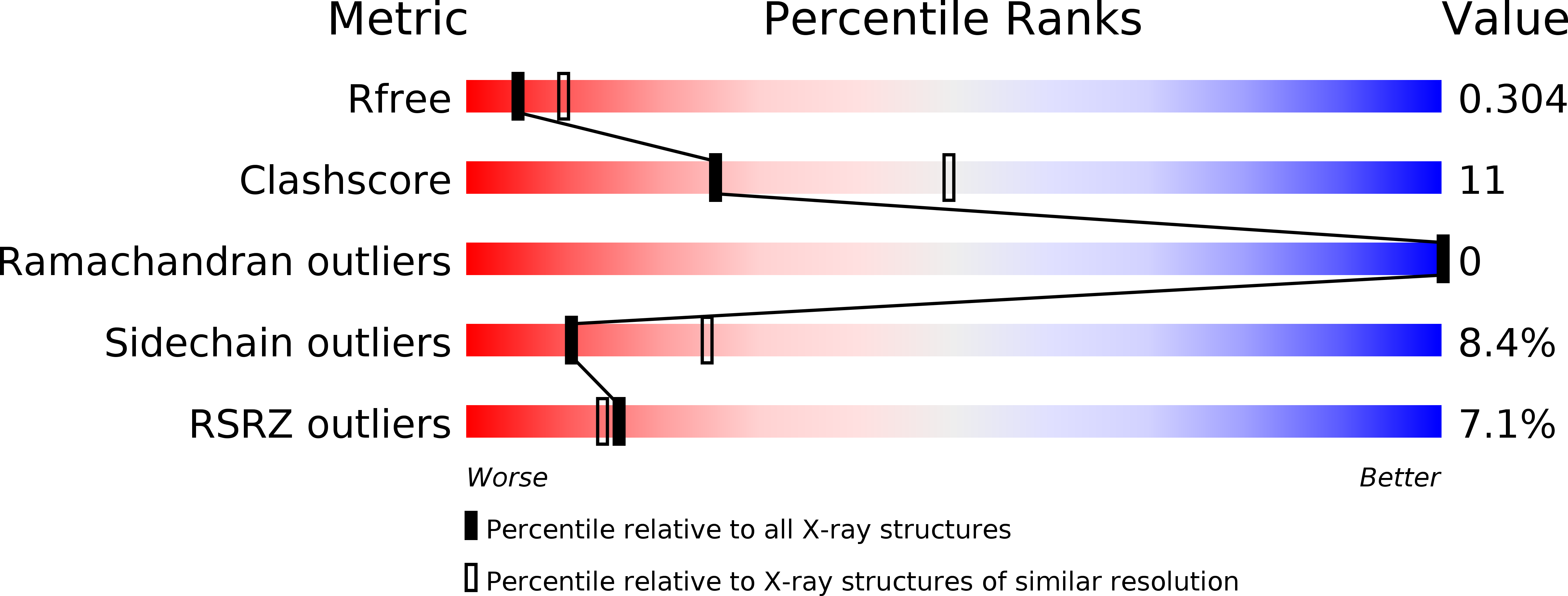
Deposition Date
2018-11-27
Release Date
2019-02-06
Last Version Date
2024-03-27
Entry Detail
PDB ID:
6IU3
Keywords:
Title:
Crystal structure of iron transporter VIT1 with zinc ions
Biological Source:
Source Organism:
Eucalyptus grandis (Taxon ID: 71139)
Host Organism:
Method Details:
Experimental Method:
Resolution:
2.70 Å
R-Value Free:
0.30
R-Value Work:
0.27
R-Value Observed:
0.27
Space Group:
C 2 2 21


